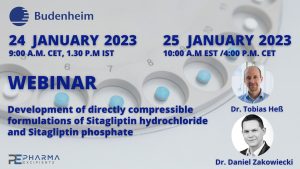Biodegradable Cationic and Ionizable Cationic Lipids: A Roadmap for Safer Pharmaceutical Excipients

Cationic and ionizable cationic lipids are broadly applied as auxiliary agents, but their use is associated with adverse effects. If these excipients are rapidly degraded to endogenously occurring metabolites such as amino acids and
fatty acids, their toxic potential can be minimized. So far, synthesized and evaluated biodegradable cationic and ionizable cationic lipids already showed promising results in terms of functionality and safety. Within this review, an
overview about the different types of such biodegradable lipids, the available building blocks, their synthesis and cleavage by endogenous enzymes is provided.
Moreover, the relationship between the structure of the lipids and their toxicity is described. Their application in drug delivery systems is critically discussed and placed in context with the lead compounds used in mRNA vaccines. Moreover, their use as preservatives is reviewed, guidance for their design is provided, and an outlook on future developments is given.
Introduction
Cationic and ionizable cationic lipids are small amphiphilic molecules that are valuable auxiliary agents for a wide range of pharmaceutical applications. As they form lipophilic complexes with anionic therapeutic agents like nucleic acids, anionic small molecules, peptides, proteins, and heparins, they are utilized to improve cellular membrane permeability of these drugs. Current prominent examples are the ionizable cationic lipids ALC-0315 [[(4-hydroxybutyl)azanediyl]di(hexane-6,1-diyl) bis(2-hexyldecanoate))] and Lipid H (SM-102) (9-heptadecanyl 8-{(2-hydroxyethyl)[6-oxo-6-(undecyloxy)hexyl]amino}octanoate) that are used for coronavirus disease 2019 (COVID-19) mRNA vaccines BNT 162b and mRNA-1273, respectively.[1] Furthermore, cationic lipids like benzalkonium chloride and cetrimide are broadly employed as preservatives and antiseptics because of their antimicrobial properties.[2]
The use of cationic and ionizable cationic lipids in pharmaceutical products, however, is a double-edged sword, as these excipients are of considerable safety concerns. Because of their permanent or pHdependent cationic nature, they perturbate cellular and nuclear membranes, trigger the release of degrading enzymes from lysosomes, cause mitochondrial permeabilization and dysfunction, generate reactive oxygen species (ROS), alter cytoplasmatic
enzyme functions, and damage DNA.[3] To address this substantial shortcoming of cationic and ionizable cationic lipids, biodegradable alternatives have been introduced that are rapidly degraded in vivo to preferably endogenous metabolites. The design of such lipids is inspired by natural cationic or ionizable cationic compounds like arginine, lysine or betaine that are generally regarded as safe. Their conjugation to endogenous lipids like fatty acids or cholesterol results in amphiphilic lipids. As ester and amide bonds are cleaved in vivo by numerous enzymes such as lipases, esterases, and proteases, they are the preferred linkages between these natural building blocks.
Since the FDA approved ethyl Nα-lauroyl-l-arginate as biodegradable food preservative being effective against a broad range of Gram-positive and Gram-negative bacteria, yeasts, and molds in 2005,[4] the potential use of biodegradable cationic and ionizable cationic lipids as pharmaceutical excipients has been evaluated by numerous research groups. As these excipients exhibit the same properties as their non-biodegradable counterparts but causing relatively low adverse effects, they will likely substitute currently used non-biodegradable lipids in the future. Within this review, we provide an overview on the different types of biodegradable cationic and ionizable cationic lipids, their synthesis and cleavage by endogenous enzymes. Applications in drug delivery systems and as antimicrobial agents are discussed. A guideline on their design and application is provided and an outlook on future developments is given.
Download the full article as PDF here Biodegradable Cationic and Ionizable Cationic Lipids – A Roadmap for Safer Pharmaceutical
Source: Arne Matteo Jörgensen, Richard Wibel, and Andreas Bernkop-Schnürch, Biodegradable Cationic and Ionizable Cationic Lipids: A Roadmap for Safer Pharmaceutical Excipients, 2023 The Authors. Small published by Wiley-VCH GmbH, The ORCID identification number(s) for the author(s) of this article, can be found under https://doi.org/10.1002/smll.202206968
Our next webinar:
For free registration and more information click on the picture below or here:


